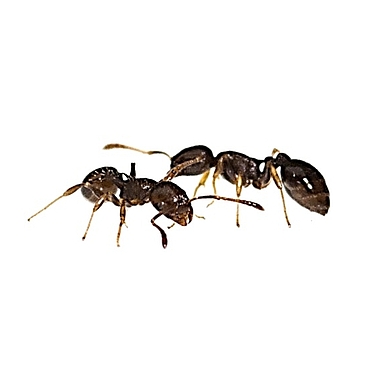Project 12.1

- PhD student: Marcel Caminer
- Supervisor: Susanne Foitzik
- Co-Supervisors: Peter Baumann, Susanne Gerber
- Further TAC-members: Joseph Colgan
- Research Group
Task specialization in worker ants is plastic and changes with age and in response to colony needs, as in our model species, Temnothorax longispinosus. Young workers focus on brood care, older ones forage. Division of labor is regulated via the expression of behavioral genes. We identify candidate genes and investigate regulatory mechanisms e.g. histone acetylation that control their expression. We aim to understand how these regulatory processes respond to external cues and how they interact.
Social insects dominate the terrestrial arthropod communities worldwide due to their effective division of labor. Not only do queens and workers divide their tasks, but also workers specialize on specific tasks such as brood care, nest construction or foraging. Social insects are models for the evolution of phenotypic plasticity as variation in gene expression largely controls caste development and task allocation. Task specialization in ant workers changes with age and colony needs. Young workers take care of brood inside the nest, whereas older workers focus on external tasks such as foraging. Workers of the ant Temnothorax longispinosus show a clear spatial and functional division of labor, which makes them ideal models to investigate the molecular basis of phenotypic plasticity in behavior.
Many lines of evidence indicate that epigenetic pathways are regulating the characteristic shifts in behavior in ants. Previous studies in our lab have shown that the administration of a histone acetyltransferase inhibitor affected the behavioral transition from brood carers to forager (and vice versa), and alter circadian rhythmicity in T. longispinosus, suggesting that a direct role of histone modifications in gene expression and behavioral flexibility.
In this project, I will deepen our understanding of the molecular basis of division of labor in T. longispinosus ants by analyzing the expression and functions of the genes controlling task specialization (brood carers vs. foragers) and the importance of histone modifications for controlling expression of these genes. For this, I will use epigenetic inhibitors such as C646 (a histone acetyltransferase inhibitor), followed up by RNA-seq and ChIP-seq to link the behavioral phenotype to gene expression and regulatory mechanisms. I aim to understand how and how fast these regulatory processes respond to external cues, the expression of which genes they alter and how they interact.